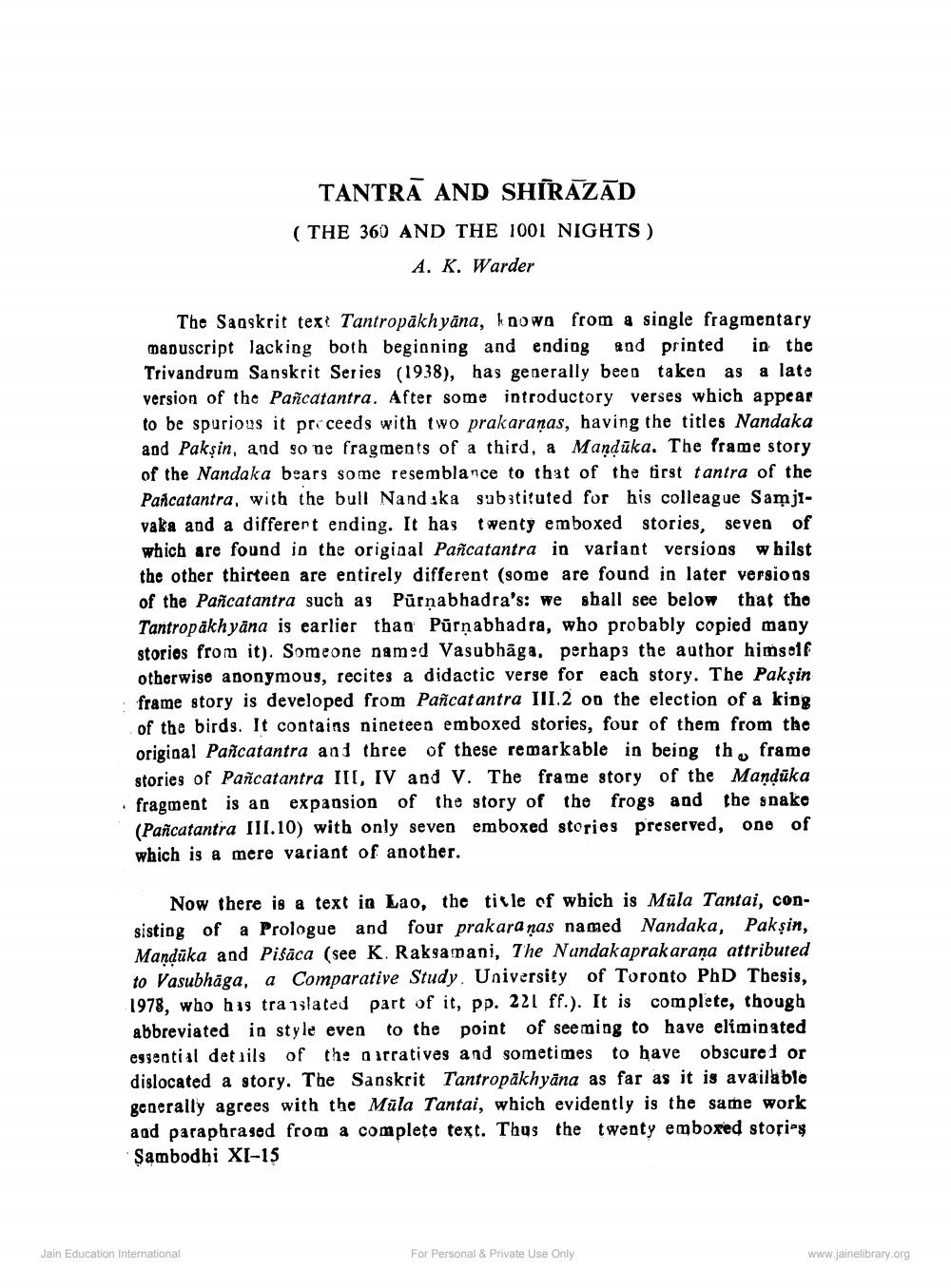________________
TANTRA AND SHIRAZAD
(THE 360 AND THE 1001 NIGHTS) A. K. Warder
The Sanskrit text Tantropakhyāna, known from a single fragmentary manuscript lacking both beginning and ending and printed in the Trivandrum Sanskrit Series (1938), has generally been taken as version of the Pañcatantra. After some introductory verses which appear to be sparious it proceeds with two prakaraṇas, having the titles Nandaka and Paksin, and so ne fragments of a third, a Maṇḍūka. The frame story of the Nandaka bears some resemblance to that of the first tantra of the Pañcatantra, with the bull Nandika substituted for his colleague Samjivaka and a different ending. It has twenty emboxed stories, seven which are found in the original Pañcatantra in variant versions whilst the other thirteen are entirely different (some are found in later versions of the Pañcatantra such as Pärnabhadra's: we shall see below that the Tantropakhyana is earlier than Pürṇabhadra, who probably copied many stories from it). Someone named Vasubhāga, perhaps the author himself. otherwise anonymous, recites a didactic verse for each story. The Pakşin frame story is developed from Pañcatantra III.2 on the election of a king. of the birds. It contains nineteen emboxed stories, four of them from the original Pancatantra and three of these remarkable in being th frame stories of Pañcatantra III, IV and V. The frame story of the Manduka fragment is an expansion of the story of the frogs and the snake (Pañcatantra I11.10) with only seven emboxed stories preserved, one of which is a mere variant of another.
Now there is a text in Lao, the title of which is Mula Tantai, consisting of a Prologue and four prakaranas named Nandaka, Paksin, Mandaka and Pifaca (see K. Raksamani, The Nandakaprakarana attributed to Vasubhaga, a Comparative Study. University of Toronto PhD Thesis, 1978, who has translated part of it, pp. 221 ff.). It is complete, though abbreviated in style even to the point of seeming to have eliminated essential details of the narratives and sometimes to have obscured or dislocated a story. The Sanskrit Tantropakhyana as far as it is available generally agrees with the Mala Tantal, which evidently is the same work and paraphrased from a complete text. Thus the twenty emboxed stories Sambodhi XI-15
Jain Education International
For Personal & Private Use Only
www.jainelibrary.org




